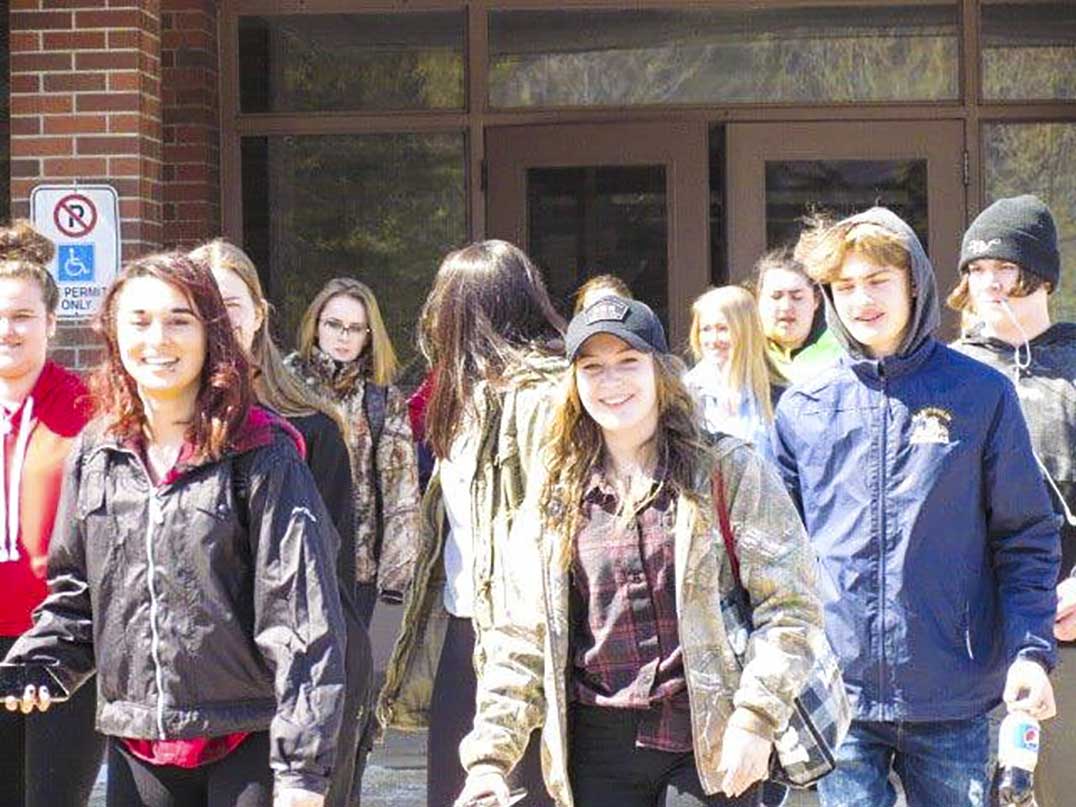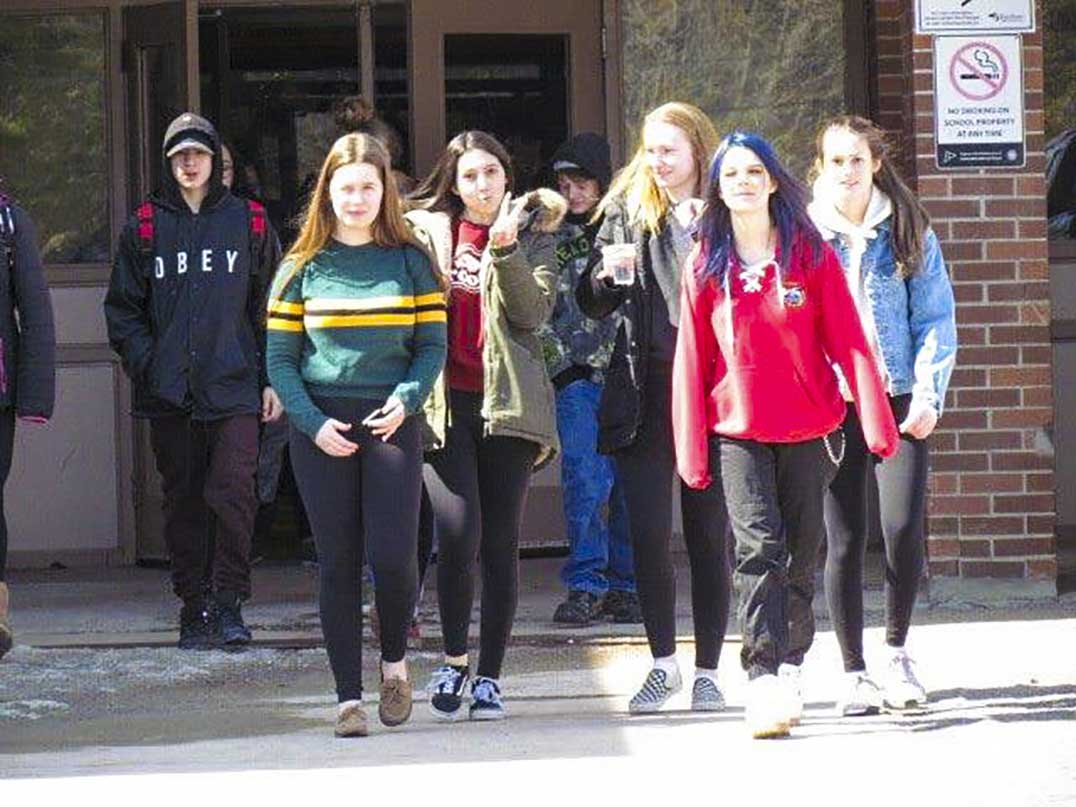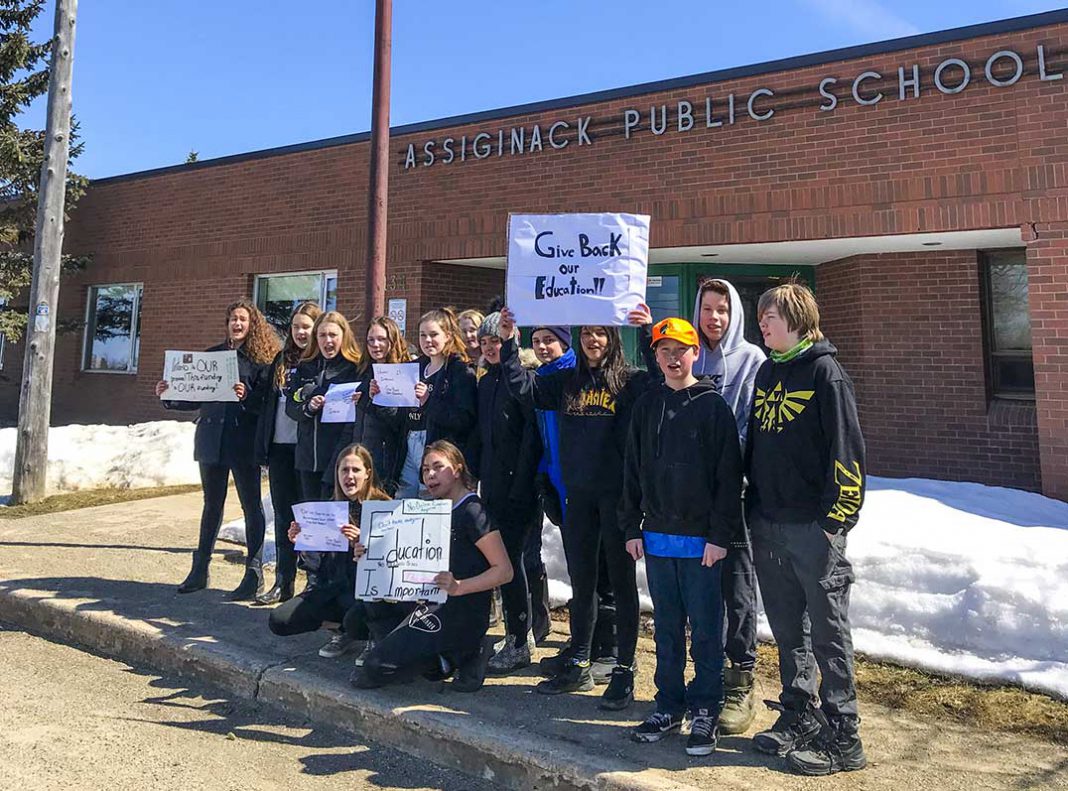by Betty Bardswich with files from Warren Schlote
MANITOULIN – Students at Manitoulin Secondary School (MSS) and Assiginack Public School participated in a province-wide walk-out April 4 to protest cuts to education, implemented by Premier Doug Ford’s education minister.
The Expositor spoke with several MSS students who were unified in their belief that upcoming cuts to education in Ontario are short-sighted and detrimental. The changes to the programs in Ontario are extensive and will impact students, teachers, guidance counsellors, assistants and custodians.
The cuts, as outlined by Education Minister Lisa Thompson, include increased class sizes for Grades 4 to 12, four mandatory online courses for all high school students, a province-wide ban on cell phones, cuts to the Education Program – Other (EPO) including physical education programs, in-class tutors, racialized youth, after-school programs and Indigenous-focused collaborative inquiry. The EPO covers community outreach, after-school programs for students on the autism spectrum and leadership for youth. The measures taken previously include cuts to school building upgrade funds, shutting down the Truth and Reconciliation-inspired curriculum writing program, the repeal of the Provincial Advocate for Children and Youth Act and the closure of the Ontario child advocate office.
Student Ethan Mejaki of Wiikwemkoong expressed concerns that funding for arts and music would be curtailed and that guidance counsellors would be let go as well as teachers.
Pierre Debassige of M’Chigeeng told The Expositor that he was out to support the teachers and pupils as he was concerned about the larger class sizes which would reduce one-to-one help. He was also concerned about the Truth and Reconciliation education report.
The Rainbow District School Board (RDSB) had outlined a draft proposal in 2017 based on a resolution committing to the development of an extensive action plan around First Nations issues. The plan has four priorities including Indigenous knowledge, Anishinaabemowin language, Indigenous culture and race relations and healing.

Some of the strategies for the report include the development of learning modules within Grade 9 Canadian history that goes beyond the existing provincial curriculum about residential schools and intergenerational trauma and that all students graduate with an understanding of the significance of treaties, traditional territories, and the shared history of First Nations and non-Indigenous Ontarians.
It is also to be a priority that all Indigenous students obtain diverse, robust, and culturally-relevant education opportunities. Pierre said that “we should all be able to co-exist,” and talked of wampum belts that have expressed the co-existence between Indigenous and non-Indigenous people in earlier years.
Tyson Otosquaiod of Wiikwemkoong similarly supported both teachers and pupils regarding the increased class sizes. Some believe that an average class size of 28 may mean that some classes could hold 40 students.
Class size increases also bother students Courtnee Osawabine of Wiikwemkoong and Destiny Debassige of M’Chigeeng. “The class sizes in some cases are too big now,” Courtnee said. “And with teachers, instead of e-classes, it’s more personal. They get to know you and watch how you learn and succeed.”
Destiny agreed, saying a lack of direct teacher involvement removes a key aspect of the curriculum. Both of the young women were concerned about younger students and what the future will hold for their education experience.
Many students in younger grades also joined in protests across the province. On Manitoulin, a group of 16 Grade 7 and 8 students at Assiginack Public School walked out of their classes led by Grade 8 student organizer Jocelyn Kuntsi.

“The government right now is treating us as non-voters and that we don’t have a voice we can use. Since we walked out of class, we’re showing we want to protest against the cuts they’re making to education. That’s important to us, they should look at what we’re saying,” said Jocelyn.
“A bunch of classmates and I had been talking about the cuts they’re making to our education and how they’ll affect us over the years. We’re all in elementary school and they’re raising classroom (size) averages here, but more so when we get to high school is when it will come into effect and last for four years. That’s our whole high school education,” she said.
Protesters refute the province’s statement that it consulted with students. On Global News Radio 640, Premier Ford blamed teacher’s union “thugs” for inciting the protests.
Ontario NDP education critic Marit Stiles expressed her concern with the changes, saying, “(Premier) Ford is taking away one-on-one help when students need it. He’s also taking away courses like band, technology, and trades classes. We’re waiting to see how this plays out.”




